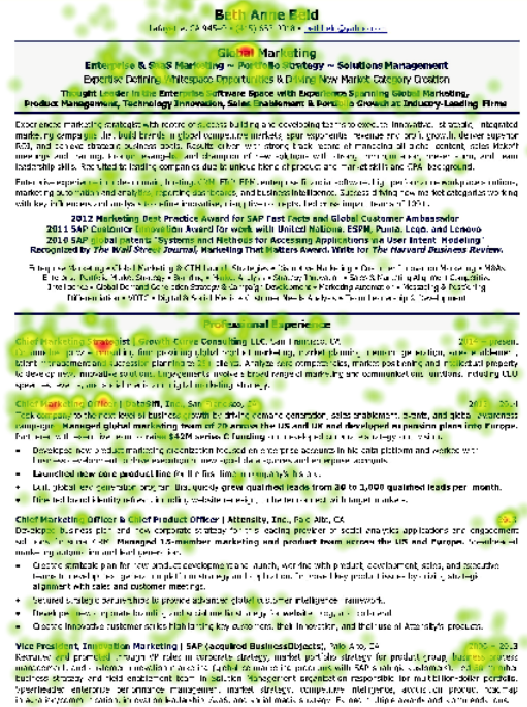Introduction

Despite operating in the toughest hiring environment in decades, many recruiters are still skimming resumes for details—with the average initial screen clocking in at just 7.4 seconds in 2018.
While that figure represents an improvement compared to the 6 sec-onds recruiters were spending the last time Ladders visited this subject, it’s important to note that the previous study was conducted during the depths of the recession, at a time when recruiters were overwhelmed with applicants for every position.
In the present environment, with unemployment at unprecedented lows, this new finding underlines the extent to which resume skimming behaviors impact not only a job seeker’s chances of being noticed, but also a company’s ability to spot qualified candidates.
What makes a good resume?
When it came to the question of where recruiters were spending their time when reviewing resumes, there was a clear delineation between the best and worst performing resumes.
Top performing resumes—those where recruiters spent most time and focus—tended to have several elements in common.
With these resumes, note that recruiters did not spend significant amounts of time on any one el-ement. Rather, they scanned the left side of the resume evenly, picking out titles and reading supplementary information as necessary.
- Clear, simple layouts with clearly marked section and title headers. Recruiters in our study spent more time focusing on job titles than on any other element.
- Layouts that took advantage of F-pattern and E-pattern reading ten-dencies (e.g. bold job titles supported by bulleted lists of accomplishments)
- An overview or mission statement at the top of the first page of the resume.
- Clear fonts


The worst-performing resumes also tended to share similar qualities:
- Cluttered look and feel, characterized by long sentences, multiple columns, and very little white space.
- Poor layout that did not draw the eye down the page (i.e. little use of section/job headers to catch the eye)
- Evidence of keyword stuffing—while this strategy can help for automated resume screening, applicants should keep in mind that a successful resume will ultimately have to be read by a real person. As such, keywords should be presented in context.
With these resumes, note the strong concentration on relatively few areas—likely a coping strategy on the part of the recruiter to deal with the sheer volume of information being presented.



Recommendations
Job seekers hoping to improve their resume should bear the following points in mind:
- With just a few seconds to make an impression, the focus should be on making the resume easy to read: use simple layouts and fonts, and avoid the temptation to cram as much information onto the page as possible.
- Recruiters scan for job titles and subheads. These should be bolded throughout the document to catch the eye.
- When discussing accomplishments, short declarative statements are easier to process—and therefore likely to be more memorable— than paragraph-length descriptions.
- The two-page rule remains for more experienced job seekers: the eye-tracking analysis demonstrated that an engaged recruiter will spend as much time on a second page as on the first. However, time on the second page is strongly predicted by how compelling the first page is—and subsequent pages tend not to perform as strongly, regardless of how engaged the recruiter is on the first and second page.
- While keyword relevancy remains important for getting a resume through to a recruiter, keywords used should appear in context.
Methodology
To conduct this research, we ran a 2-stage study. The first stage focused on speed, with recruiters (who were not aware they were being timed) reviewing a stack of resumes to identify potential candidates. The second stage, which focused on what recruiters pay attention to while reading, used eye-tracking technology to follow recruiters’ progress as they read a selection of resumes under lab conditions.
